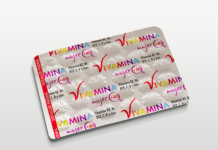This is the concluding part of our report on the Packaging Conclave held at Pragati Maidan, New Delhi on the 4 August 2017 as part of the PackPlus 2017 event. S Chidambar reports.
Technical Session 2 of the conclave was a panel discussion on Migration and Toxicology: A Threat To Consumer Safety. Discussions were mainly on how package safety could be affected by potential migration to the contents of the package from constituents of the system like printing inks, coatings, adhesives, additives and, in some cases the packaging materials themselves.

The session was chaired by Dr Joerg Peter Langhammer, vice president – Global HSE and Sustainability of Siegwerk. The other panelists were professor V P Sharma of the Indian Institute of Toxicology Research, Dr Evert Delbanco, director – Food Safety and Toxicology of Siegwerk India, and Dilip Singh, national manager of SGS India.
Dr Langhammer introduced the session that no food is safe without Package Safety, which can only be ensured by design. This program can only be effective using an integrated approach involving all partners in the supply chain; the first choice while inducting supply chain partners should always be those who have the expertise and are compliant.
Dr Delbanco emphasized the importance of food products that are compliant with safety regulations and cited examples of recent instances in Europe like those caused by photo initiators in juice and dairy products, benzophenone from printed shrink sleeve labels in cream containers and mineral oils from printed cartons of chocolates and crisps where migration compromised food safety leading to significant loss of brand image and high costs of brand recalls. There was also a case in India where the product itself (noodles) contained excessive lead and the consequent enforced withdrawal from the market caused substantial loss of company and brand image and financial burdens. Migration is the physical transfer of undesirable substances either through direct contact with food products or by permeation through packaging materials; even rigid containers are not exempted from these phenomena.

Solvent-based inks are usually made up of 4 major components – solvents (50% – 70%), binders (15% – 30%), colourants (12% – 20%) and additives (4% – 8%). The major threats to safety in printing inks come from toluene and mineral oils.
A major area of concern is that 90% of rotogravure inks used in India are based on toluene (rotogravure is by far the predominant printing process used in by the Indian flexible packaging industry). The concentration of toluene in printing inks can be as high as 40%. Toluene has very harmful effects on health ranging from breathing difficulties, eye and throat problems, exhaustion, dizziness, hallucinations, memory loss and confusion, skin irritation, dermatitis, suspected damage to unborn children, ototoxicity, imbalance, hardness of hearing and anacousia (deafness). It poses threats not only to brand owners and consumers through transfer to food ingredients and as retained solvent in the packaging materials but also to operators and other personnel during the printing and conversion processes. There is poor awareness of the harmful effects of toluene based inks and the implementation and acceptance of non-toluene inks is further hampered by their being more expensive.

Mineral oils are used extensively in offset (lithographic) printing and their concentration in inks and lacquers can be as much as 30% – 50%. Currently, the sheetfed and UV printing ink segment is totally based on mineral oils. Some mineral oil components can accumulate in the human body and can cause lipogranulomas (nodules of lipoid material that cause inflammation in human tissues) in the lymph nodes, liver and spleen. Many mineral oils are tumor promoters and yet others are genotoxic carcinogens. Unfortunately, apart from a few enlightened international brand owners, very few end-users even know of these problems or address them adequately.
Other ink components (like plasticizers, color contaminants, hardeners, binders and photoinitiators) can also cause adverse health effects and, hence, a thorough testing program has to be in place to avoid any harmful outcome. Additives in inks and coatings are of two types – those deliberately added for functional suitability and ease of processing and those that are unpredictable and accumulate non-intentionally (called NIAS). While the former are usually well-known and tested, the latter could be due to additions by raw material manufacturers to starting monomers, catalysts and process aids and their chemical structure is often unknown.

Thankfully, major global ink manufacturers like DIC, Sakata, Toyo and Siegwerk are present in the country and in a position to offer safe ink systems that avoid the problems mentioned above. Professor Sharma outlined some trends in plastics, additives (plasticizers, stabilizers, bisphenols), adhesives, materials, inks and other additives that could pose safety hazards and emphasized the need to carry out tests taking into consideration all stages of the supply chain and potential exposure to unfavorable conditions and temperatures and the possibility of the products picking up contaminants or degrading during their life-cycle. Risks are also posed when recycled post-consumer content is used. He listed various statutory bodies that regulate standards, safety guidelines and labeling for products. He also stressed the importance of the involvement of all supply chain partners. The importance of providing a suitable barrier to prevent the migration of materials through the packaging materials into the products was re-emphasized.
Dilip Singh explained the standard tests, test conditions and food simulants specified by most regulatory bodies that are used to test both overall migration and specific migration and extraction values of individual components of packaging systems. Specific limits are laid down for different materials, additives and individual ingredients.
Ensuring packaging compliance
Technical Session 3 was again a panel discussion on Packaging Compliance: Connecting The Dots. Discussions were mainly on how to organize a system that addresses the whole gamut of Package Safety and links all the requirements from risk assessment to delivery through a well-designed integrated approach.
This session was chaired by Dr Evert Delbanco of Siegwerk India and the other panelists were Jean-Baptiste Milleret of Henkel, Raghu Guda, director of Ernst and Young, SN Venkataraman divisional head of Marketing of ITC PSPD and Dr Joerg Peter Langhammer of Siegwerk.

Milleret spoke about the implications for adhesives in the Package Safety framework. From being the ‘forgotten’ layer, adhesives have emerged as a prime component especially with the growth of multi-layered structures and flexible packaging in general. He explained the system used by Henkel right from analyzing raw materials from material suppliers to collaborating with all the supply chain partners and testing all system components at every stage. Adhesives now need to be safer, more amenable to fast operations, faster curing and more sustainable.
Dr Langhammer explained the ink manufacturer’s perspective towards food packaging compliance. He elaborated on the system used by Siegwerk for ensuring safety compliance and cited various regulations in place for regulating food packaging safety standards. He stated that Siegwerk now has solutions for all the printing ink problems raised in the earlier session and now offers non-toluene inks, mineral oil free inks, migration optimised inks and information and testing on NIAS.
Venkataraman traced the evolution of paperboard packaging and explained how to select grades for food packaging. He explained the evolution of paper and board packaging from simple plain boards to barrier-coated boards suitable for direct food contact. He also cited various issues and instances of adverse food safety events internationally. He showed the chronological evolution of regulatory measures and standards related to food packaging compliance and then explained how his organization structured its manufacture and testing and food safety compliance activities including the elimination of elemental chlorine for bleaching. One important point which emerged from his presentation was that one should avoid using recycled fibre and use only virgin fibre based paper and paperboard when tackling direct food contact.











